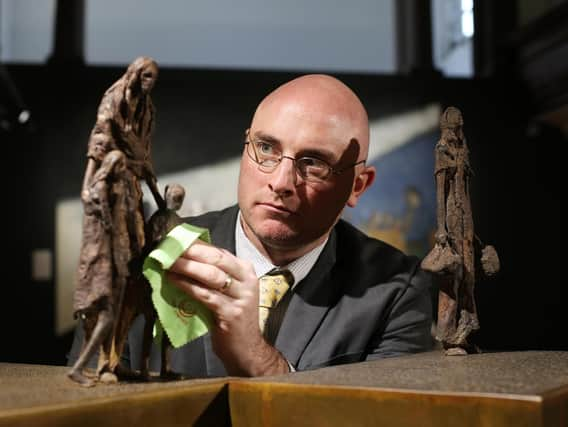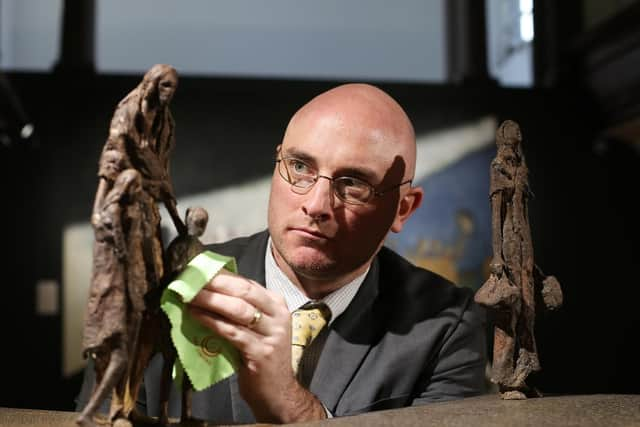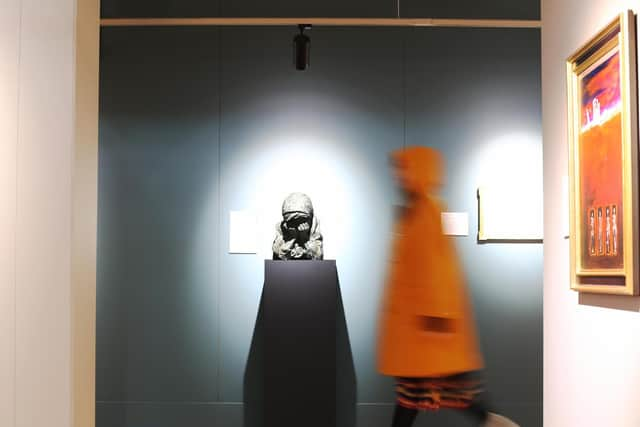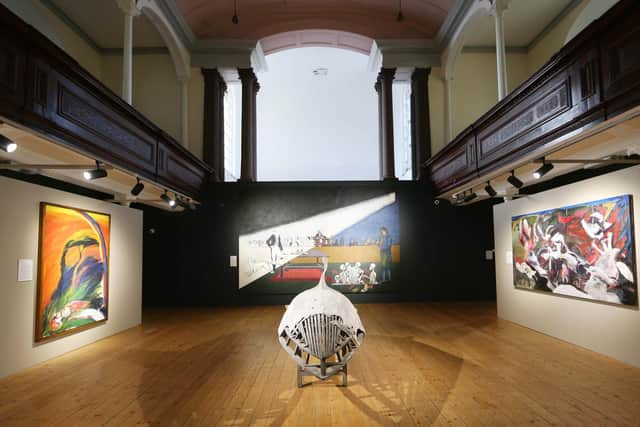Video: World’s greatest famine art collection tells a story for our times says Ryan Mahoney as exhibition opens in Derry


‘Coming Home: Art and The Great Hunger’ was launched at Cultúrlann Ui Chanáin’s Glassworks last night.
The must-see expo collects the responses of Daniel Macdonald, Paul Henry, Jack B. Yeats, William Crozier, Hughie O’Donoghue, Dorothy Cross, Alanna O’Kelly, Lilian Lucy Davidson, Robert Ballagh, Michael Farrell, and others, to one of the most traumatic episodes in Irish history.
Advertisement
Hide AdAdvertisement
Hide AdRyan Mahoney, Director of Ireland’s Great Hunger Museum at Quinnipiac University, Connecticut, who has brought the largest collection of Great Hunger-related art in the world to Ireland for a year-long tour, took the ‘Journal’ on a guided preview.


Entering the exhibition the visitor is confronted with Lilian Davidson’s ‘Gorta,’ 1946, a harrowing portrayal of the destruction by starvation of one family in the 1840s.
Take a step to the right and the room opens up on Michael Farrell’s scathing ‘Black ‘47’ , 1997, in which Charles Trevelyan, the perpetrator of John Russell’s laissez-faire Whig policy in Ireland in the 1840s is tried.
“What Farrell is doing is putting Charles Trevelyan, assistant secretary to the British Treasury on trial for his crimes against humanity. You have bodies rising up out of the ground as witness to this policy of non-interference,” says Mahoney.
Advertisement
Hide AdAdvertisement
Hide AdThe iconic painting borrows motifs from the greatest atrocity of the 20th century, The Holocaust, in his evisceration of Britain’s liberal economic policy during ‘An Gorta Mór’ - the searchlights and discarded shoes of Auschwitz/Birkenau, for example.


Margaret Lyster Chamberlain’s ‘The Leave-Taking’, 2000, does the same, recreating in bronze a scene that could have been witnessed on the Derry quay in the 1840s or on the rail halts of Central Europe in the 1940s.
“Chamberlain took images of The Holocaust, saw the effect of starvation on the human form, and used that to model these images. It’s heartbreaking. You see families being broken apart. You see young kids. You see the elderly who may not make the trip across alive,” Mahoney says.
Fittingly, the collection was enabled after the late US bagel tycoon Murray Lender, a son of Polish-Jewish emigrants, heard John L. Lahey, President Emeritus of Quinnipiac University give a talk on the famine. The story resonated with Lender who felt it needed to be widely heard. He became a benefactor.
Advertisement
Hide AdAdvertisement
Hide Ad“Just as The Holocaust isn’t just a Jewish story, The Great Hunger isn’t just an Irish story. Murray didn’t have a drop of Irish blood but saw the parallels in his own family story...He saw the connections between that and Ireland in the 19th century and felt it was a necessity to tell this story to ensure something like this doesn’t happen again.”


Mahoney shares Lender’s vision. ‘An Gorta Mór’ is a story for our times, he insists.
“It allows us to talk about refugee issues, hunger issues, immigration issues, things that we see an the front pages of newspapers every day. It’s remarkably moving, an emotional experience and an experience that causes a lot of anger.”